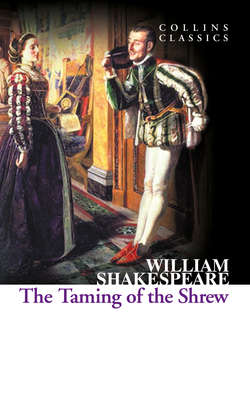Читать книгу The Taming of the Shrew - Уильям Шекспир, William Szekspir, the Simon Studio - Страница 10
INTRODUCTION
ОглавлениеMichael Bogdanov’s modern-dress production of The Taming of the Shrew in 1979 was well received in terms of its theatrical competence but a number of critics felt that however well done, it had better not been done at all. Michael Billington in the Guardian doubted that there was any reason to revive a play ‘that seems totally offensive to our age and our society. My own feeling is that it should be put back firmly and squarely on the shelf’. Suggestions of censorship, as it were, have at least the merit of indicating that the offending object is being taken seriously, nor is Billington the first to find The Shrew a peculiarly damning blot on Shakespeare’s output: Shaw famously registered shame at ‘the lord-of-creation moral implied in the wager and the speech put into the woman’s own mouth’. The Shrew has generally proved a bit of a facer for those who would claim that Shakespeare is a great universal genius with ideas that transcend the limitations of his time. Hence the tendency of modern readings and productions either to imply that Shakespeare did not really acquiesce in the apparent patriarchal assumptions of the taming plot (nor the reductiveness about female charm implied in Bianca’s defection from maidenly modesty), or to suggest that even if he did, the usefulness of the play for the twentieth century is to expose the latent misogyny and brutality that still form the real infrastructure of our bien pensant, politically correct culture.
One way of distancing Shakespeare from the implications of the taming plot has been to repair the broken frame of the play, increasing the significance of the Sly plot by importing material from the anonymous The Taming of a Shrew, printed in 1594 and possibly a ‘memorial reconstruction’ of a Shakespearean original. The taming and submission of Katherine can then be made to appear an unattainable and possibly rather vulgar male fantasy of domination, a dream of empowerment not unlike the violent fantasies of Pirate Jenny in Brecht’s Threepenny Opera. Alternatively, the play can be made to appear more coherent by privileging one or other of its generic modes. On the one hand by ignoring the incipient psychological complexity in the treatment of Katherine in particular (she is after all not the favoured child of her father and Bianca’s butter-wouldn’t-melt-in-her-mouth demeanour might irritate more than a shrew), and taking the whole as a farcical romp with no power to move or upset. On the other side, the farcical nastinesses can be played down in favour of modern notions of relationship where all is fair between the couple because they really love each other, win through to equality within properly constituted hierarchy, and are even, in the most sentimental versions of such a reading, complicit in Kate’s response to the wager.
Certainly H. J. Oliver in his introduction to the New Oxford edition of the play feels that Shakespeare’s not having provided a generically consistent play is a consequence of his youthfulness when he devised it – it is ‘a young dramatist’s attempt to mingle two genres that cannot be combined’. But if generic miscegenation is an effect of youth, then it is surprising to find it again in All’s Well That Ends Well and Measure for Measure. Since in these plays it does much to earn the description ‘problem plays’, it might be well to consider if this is not also the effect in The Shrew. The clash of farcical folk-tale in the taming plot with the legitimate desires of both Petruchio and Katherine for lives that they can live, betrays the inconsistences and half-truths that are daily tolerated and evaded. There seems to me no possible way of doubting that Shakespeare presents Katherine’s speech of submission to an idealised hierarchy of gender relationships without irony, but he surely does not do so without thought or without demonstrating the worst that can be said about its potential for physical and psychological tyranny.
The rewards for Katherine’s submission in life, as it were, are presumably those ‘good days and long’ that Petruchio has already stated as his goal. Since it comes as a definitive culmination to the action, the audience is left with no sense of need for its endless repetition, it frames a way of life, while shrewishness is on the contrary a lifetime career, the future of Bianca and the widow. This is not modern but it is not too bad in the circumstances. And the reward in the theatre is the complete stage dominance of Kate. It is possible, of course, to pluck weary disaster out of Katherine’s eloquent dignity but it seems not worth the trouble.
